Peru is a beautiful country where the topography varies drastically. When I flew into mountainous Cusco from coastal Lima the beauty (but mainly the altitude) took my breath away, literally!!! Amazingly beautiful, wonderfully diverse, incredibly far yet strangely familiar – that is what comes to our mind when we reminiscent on our recent holiday in Peru. No amount of research and reading before the trip could have prepared me for what I was about to see. Since most visitors come to see Machu Pichu, Cusco the starting point of our holiday is usually the jump off point to this ancient wonder.

In the days of the Inca, all roads led to Cuzco. From here, the Inca ruled over a self-contained world that stretched from modern-day Colombia to Northern Argentina, composed of organized agriculture cultivation, education systems, trade and commerce. The name of the city literally translates to “centre of the world,” and bragged so many modern novelties. The main language used was Quechua which is still widely used in all parts of the Andean Highlands. The Quechua Indians of the central Andes are the direct descendants of the Incas. The Inca Empire was a highly developed civilization with an impressive governing structure until it was invaded by the Spanish in 1500. Peru attained independence from the Spanish in 1821. However modern-day Peru has struggled to modernize. It has been plagued by problems of hyperinflation, poor governments, and terrorism. Most Quechua still live in the Andean highlands. Their sustenance relies on agriculture and pastoralism (nomadic herding) as did their Inca ancestors with tourism adding on to their source of income in recent times. By making offerings to the powers that control natural forces, the Quechua feel they can influence events and not merely be helpless in the face of bad weather or disease. When drinking alcohol, for example, it is still customary to first offer a drink to Mother Earth “Pachamama”. However after the invasion of Spanish they were forced to adopt Christianity and incorporate it into their indigenous beliefs.
Interesting Fact – Some Quechua words have also made it into English: coca, condor, guano, llama, puma, quinine, and quinoa.
Top tip– If you have never been on a high altitude holiday there is a very high chance of you getting some altitude sickness so it is good to be prepared. Ibuprofen helps a lot and you also have local oxygen shots and coca leaves to your aid.
CUZCO: A PUMA AT THE CENTRE OF THE WORLD
During the rule of the Inca, Cuzco (also spelled “Cusco”) was not only the political seat of the empire; it served as a cultural and religious centre as well. It encompassed sewage and drainage systems that were very advanced and efficient for this remote culture. The design of the city was said to mimic the outline of a puma, a sacred animal of the Inca.
As soon as you walk into Cusco you can just feel the energy of past generations here, walking the ancient stone streets and passing through oversize doorways once reserved for Inca royalty.

In Cusco, a World Heritage site, two extraordinary cultures literally sit one on top of another—throughout the city, massive Inca stonework supports colonial Spanish balconies. Likewise, the local cuisine is a delicious blend of European influences and Andean ingredients. The cultural melding can also be witnessed in places of worship, such as Cusco’s Catholic cathedral—itself built on the site of an Inca temple—where indigenous Quechua beliefs can be detected in depictions of the Virgin Mary. If you time your visit in February or early March, you too can experience dancers wearing traditional garb adorned with agricultural elements such as cornstalks to celebrate fertility—in both crops and new couples.

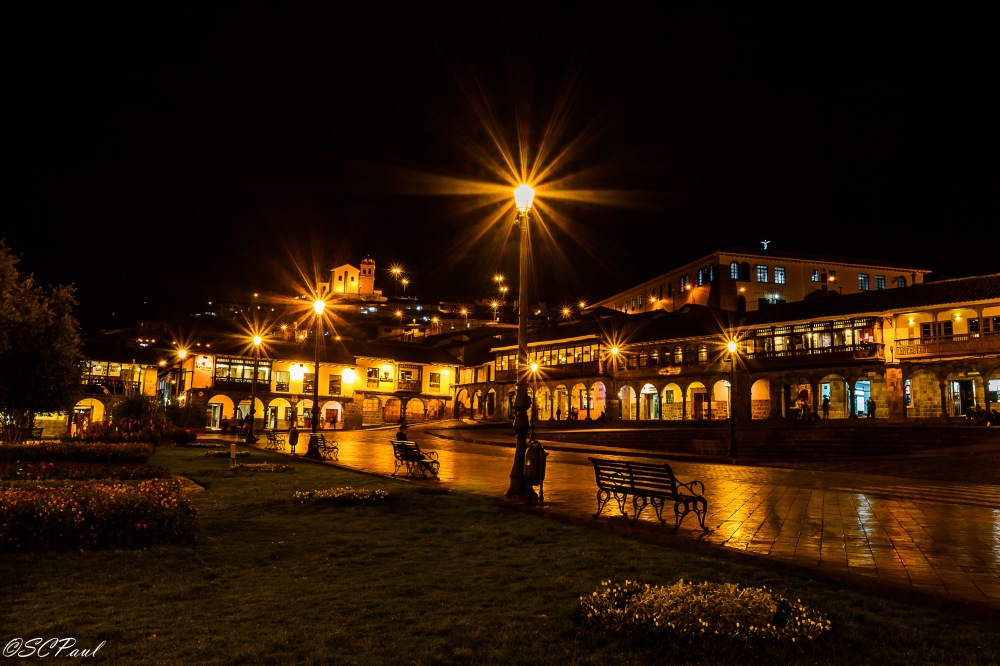


The Plaza de Armas which is both scenic and centrally located makes it a great place to start exploring Cusco. One structure that shouldn’t be missed is the La Cathedral (and attached Church of Jesus Maria). The ornate cathedral that was built-in the 1500s’ is a great example of the Spanish religious influence in the region. Another thing you’ll notice that has Spanish influence is the Portal de Panes – a covered area of sidewalk surrounding the plaza, where there are numerous handicraft shops and relaxing cafes that offer views overlooking the plaza. It makes for an ideal place to sit and have a drink or to simply do some people watching.
A DAY IN THE SACRED VALLEY
The next day started off with a drive through the Sacred Valley which was incredible; the Andes provide a very dramatic background and the random livestock make you feel miles from civilization. We stopped at a couple of overlooks to capture some digital images to add to those we were storing in our minds. The mountains were covered in lush vegetation through which red soil peeked through. Add to that blue skies and brilliant white clouds; neon blue-green hummingbirds gathering nectar from tiny, yellow flowers — a very colourful scene indeed.
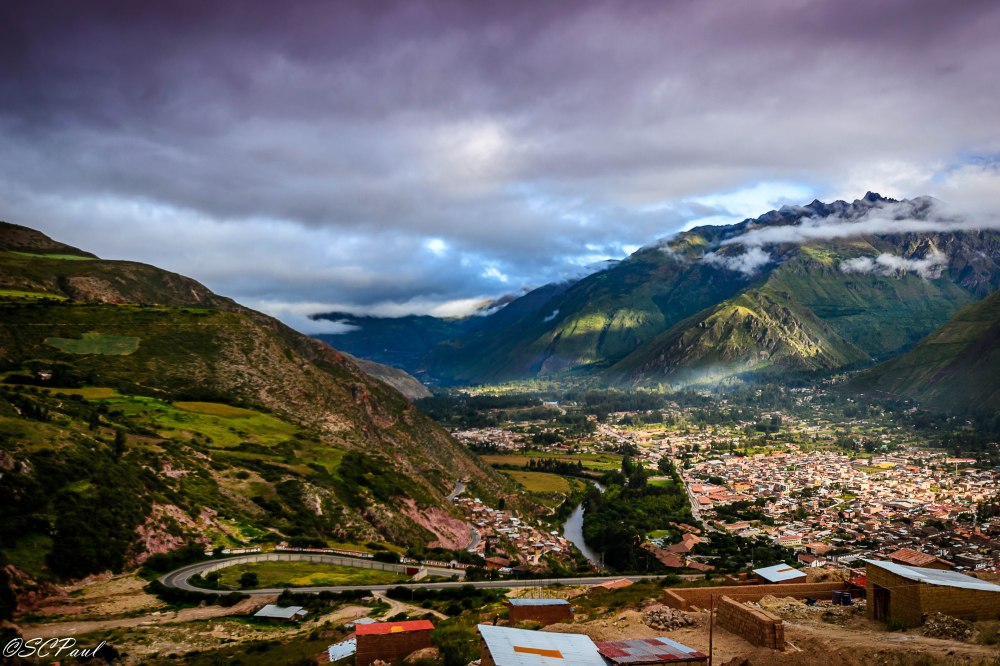

Our first stop was at Pisac Ruins, Marco, our driver, dropped us off at the entrance near Qanchisracay, the highest part of the ruins. I won’t easily forget our first view of the terraces from an overlook just inside the entrance. Yes, we had seen such terraces before, but these looked particularly impressive, perhaps because of the setting in which we were seeing them. From what I learnt, such terraces were used primarily to cultivate maize. The crop was “highly esteemed” — in other words, it was very important in the Inca culture. At sacred sites, maize was grown for the purpose of brewing chicha, a beer-like drink (which by the way tastes awesomeJ ) used liberally during rituals. Pisac is said to have been the largest fortress-cum-urban center-cum-temple complex in the Inca Empire. Balanced high on the mountainside, it was visible to anyone entering the Sacred Valley.

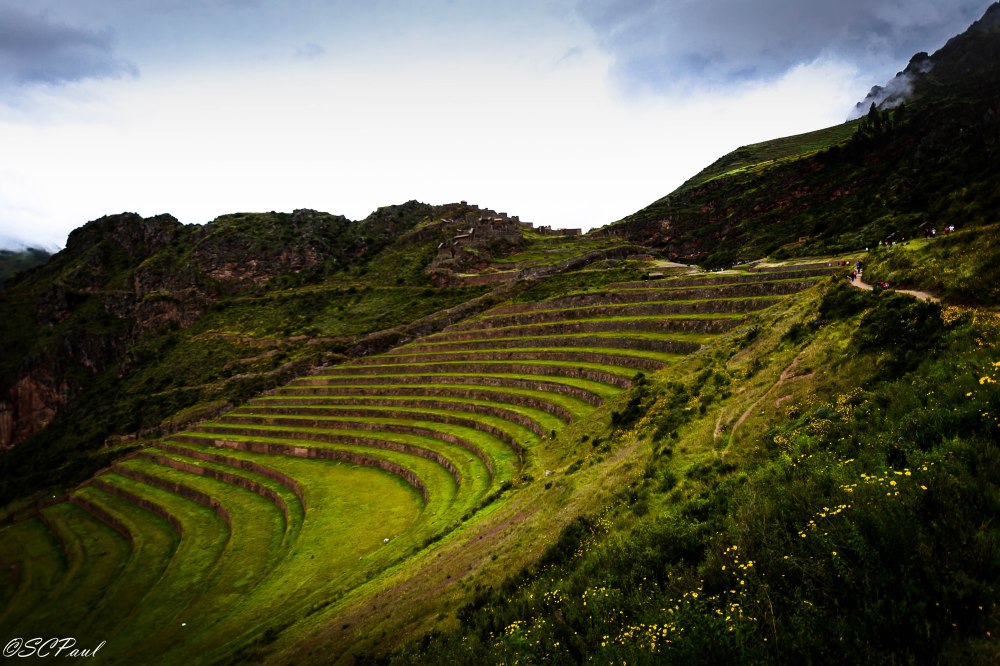
Next stop was the Pisac town market. Just outside the entrance to the town market, locals were congregated around vehicles from which bundles of produce were being unloaded. As soon as we entered the market we found ourselves in a courtyard by a wood-burning oven blackened by soot from years and years of operation. The baker was pulling out roasted cuy and potatoes from the oven. (Roasted cuy is basically a guinea pig, a delicacy in Perú.) Thanks, but we’ll pass — just couldn’t see myself eating roasted cuy when their live cousins were running around their “cuy houses” just a few feet away.)
Slowly, we made our way through the market where vendors were setting up for the day ahead. Everywhere we looked there were displays of alpaca goods, including sweaters, scarves, and chullos; pan flutes; necklaces, earrings, and bracelets made of polished stone; handmade tapestries and bags; and just about any kind of trinket one might desire. Colour, colour, colour! That was my first impression of the local market, which was far more authentic than the touristy stalls we had passed. The locals went about their business with little regard to the presence of the few visitors that had ventured into their domain. Campesinos (farmers) selling fresh produce and flowers; villagers touting everything from bags of salt, quinoa, and rice, to matches, to sweets, to vibrant natural dyes; old women sorting through piles of potatoes and corn.
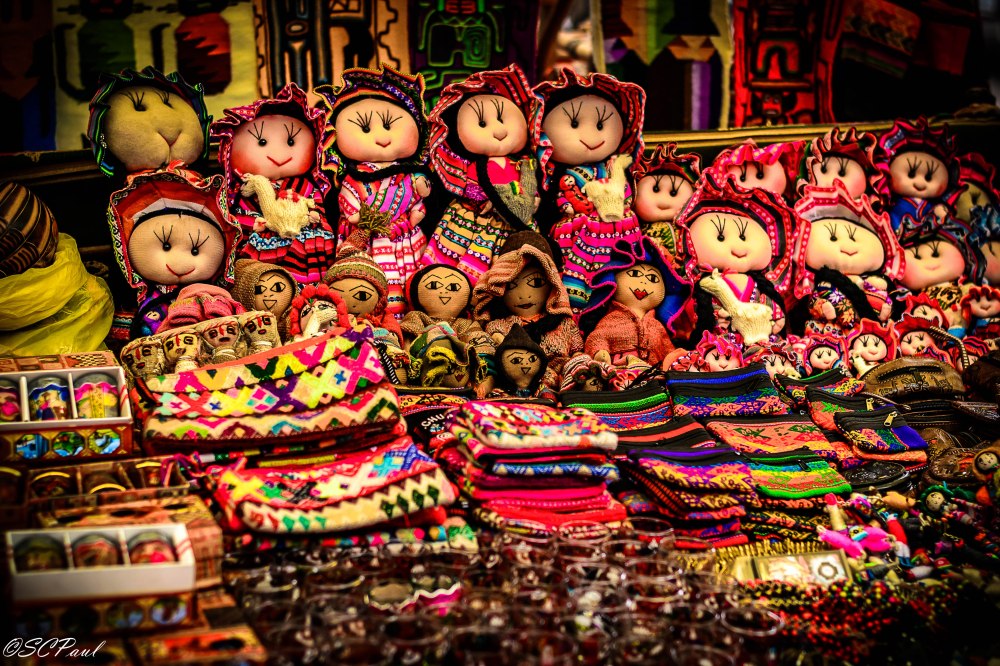


After pursuing with my favourite hobby (shopping of course!!!) for some time we were on our way to the last stop for the day – Ollantaytambo ruins. Although the site did serve a defensive purpose, it was built as a ceremonial centre, using stones from a quarry located high on a mountain on the other side of the Urubamba River (about four miles away). It was difficult for us to comprehend how they managed to move these massive stones— after all, they didn’t have vehicles to use for transport or cranes to lift them. We spent quite some time exploring the ruins, studying the close alignment of stones in the walls.


Incan architecture


MACHU PICCHU – A CITADEL IN CLOUDS
So the first day was just a warm up for our ultimate destination – Machu Pichu. No matter how much you read beforehand, (and Hiram Bingham’s book is an easy read to get you into the mood), the first sight of Machu Picchu is spectacular. The pictures you see tell only half the story. The view all around you adds to the magnificence of the place. How it was built at such an apparently inaccessible point on the mountain and how it was ‘lost’ for 400 years are mysteries that you will puzzle over throughout the visit.
To go to Machu Picchu one can either take the Peru Rail from Cusco or Ollantaytambo travelling in luxury. The Peru rail has also got many options to travel or you can choose to the Inca Trail for 4 days which is a totally different experience all together. We chose the train. Before boarding I had imagined a crystal-clear glass train wandering loudly through mountains while sitting in a lush chair soaking in the views of ancient Incan ruins. When I saw the Vistadome train I can truly say that my dream was pretty close to reality!
After the reaching Aguas Calientes (the nearest town to Machu Picchu) there is another half an hour bus journey you have to make to reach the final destination. Having travelled the winding road up the mountain, you are more than ready for something truly special and you will not be disappointed. As I gazed awestruck at the 15th century Inca civilization surrounded by cloud forests and blanketed in a misty fog— I was speechless. Words can’t explain the feeling of seeing this wonder of the world for the first time.
We were really excited to get into the city. We hurried past aggressive guides who gave us an aggravated warning that we would get lost without them. We had found through our visits to other ruins that they all work about the same with the same structures, so we decided we’d learned most of what we could already from our previous guide from Sacred Valley. My pace quickened and I definitely had the sensation of being a kid, getting ready to finally go to a long desired theme park or zoo. Beyond the entrance were a disappointing number of people but the ancient city sprawled out in front of us.


Our excitement was alleviated by the baffling number of high altitude stairs everywhere in front of us. We soon realized most people who had hired guides were in tour groups of various sizes, moving slowly and methodically on a predetermined route through the city. This allowed us to quickly get beyond the crowds and enjoy much of the city with just a few other people on the first day.
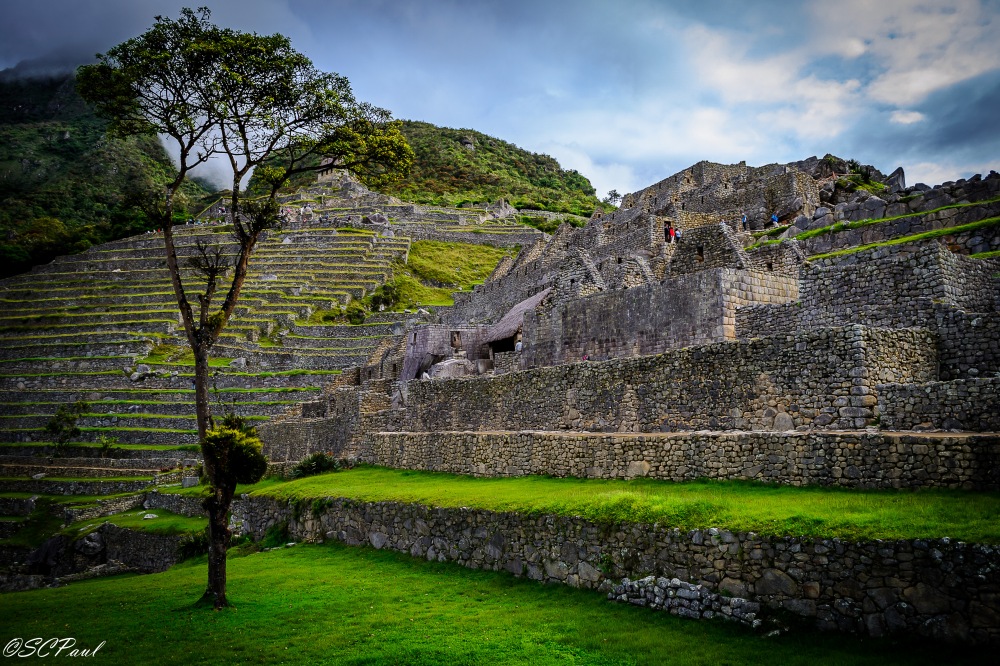


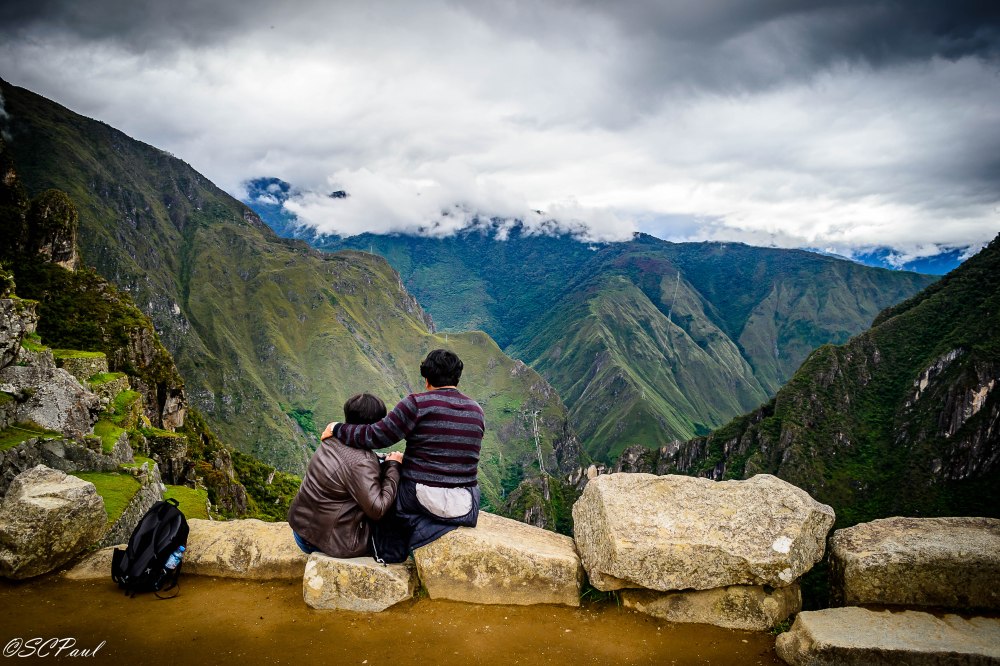


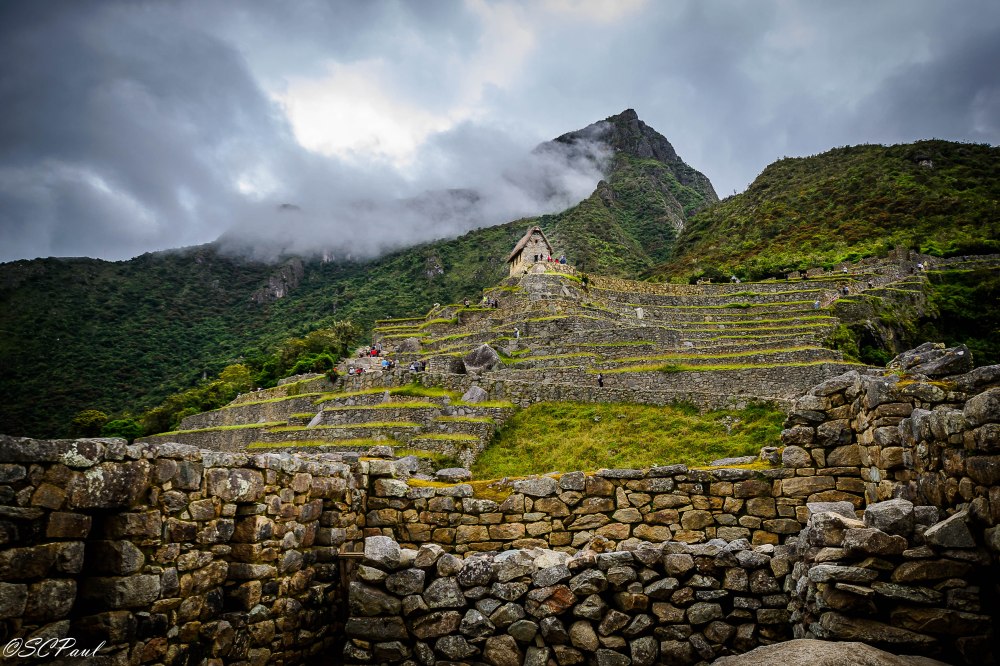

The next day was the big hike to the Inti Puku (Sun Gate). There are a lot of hiking options inside the citadel such as hike to the Sun gate, hike to the Inca Bridge or up the mountains of Huyana Picchu or Montana Picchu. We chose to do a hike for 8 km up to the Inti Puku, Sun gate which was once the main entrance of the citadel. This gate was dedicated to the Sun God. The sun would come out from this site and it was used to watch people crossing the site. It was a slow and gradual uphill climb which almost took us the whole morning with a few stops in between.



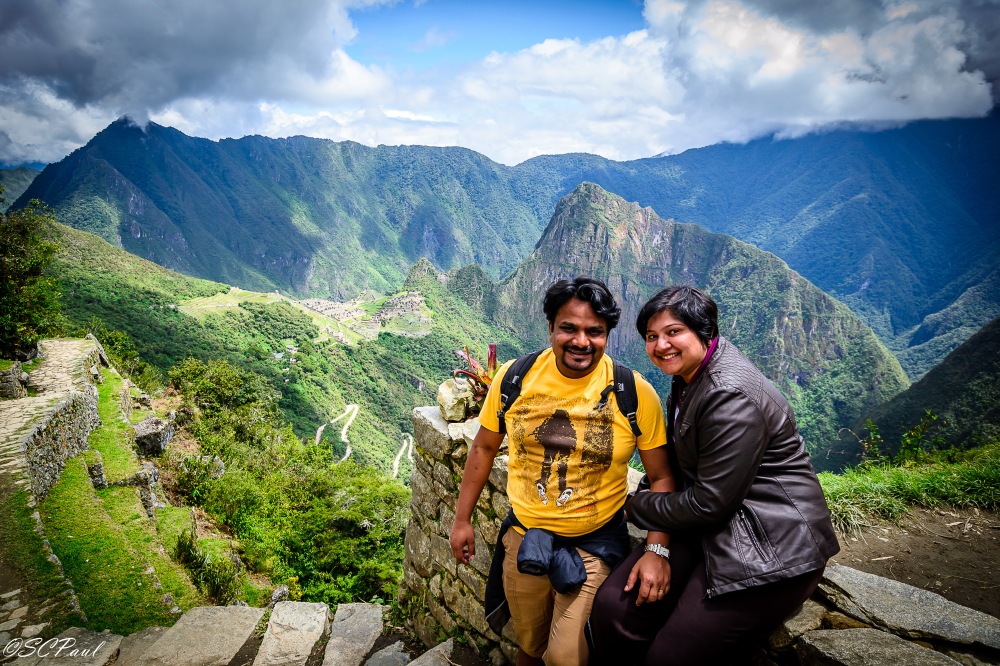
After a whole day of trekking and exploring we took one last look at the sight and left feeling fortunate and overwhelmed by the whole experience.
MARAS MORAY CHINCHERO
Nearby Cusco are areas of Moray and Maras which are not to be missed. The green circular terraces of Moray were believed to be an ancient agricultural experiment station, is a proof of Incan ingenuity and skill. The stories and legends behind this archaeological site are just as interesting. The terraced salt fields of Maras are something worth seeing. As we were approaching Maras the view of the place already took my breath away. Against a backdrop of green and red mountains and blue skies is an intricate layout of white salt evaporation ponds that have been used since Inca times. Magnificent should suffice to describe the landscape.
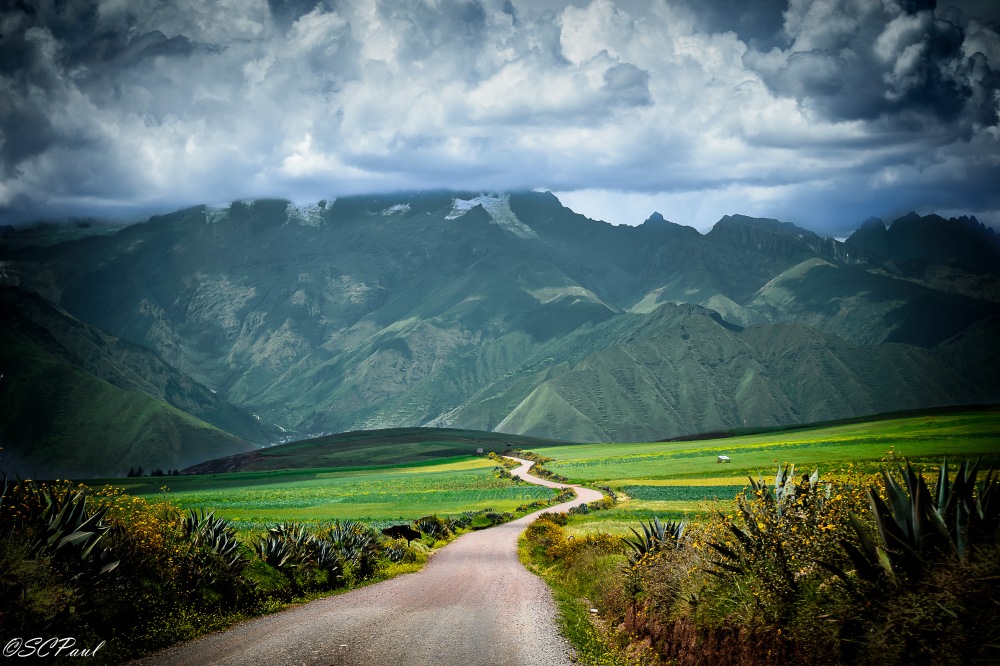
Maras – the centuries-old Salineras salt pans. A source of extremely salty water comes from the mountains and these mines have been in use since the time of Incas. The fields are filled with salt water and because of the altitude; the sun will evaporate the water quickly. This ensures that the salt stays in the field. People work in the fields throughout the day to fill the fields and collect the salt. They produce different qualities of salt and each quality has a different colour. It looked like really hard work, and the workers were covered in salt which must hurt if it gets into any cuts, cracks or the eyes.
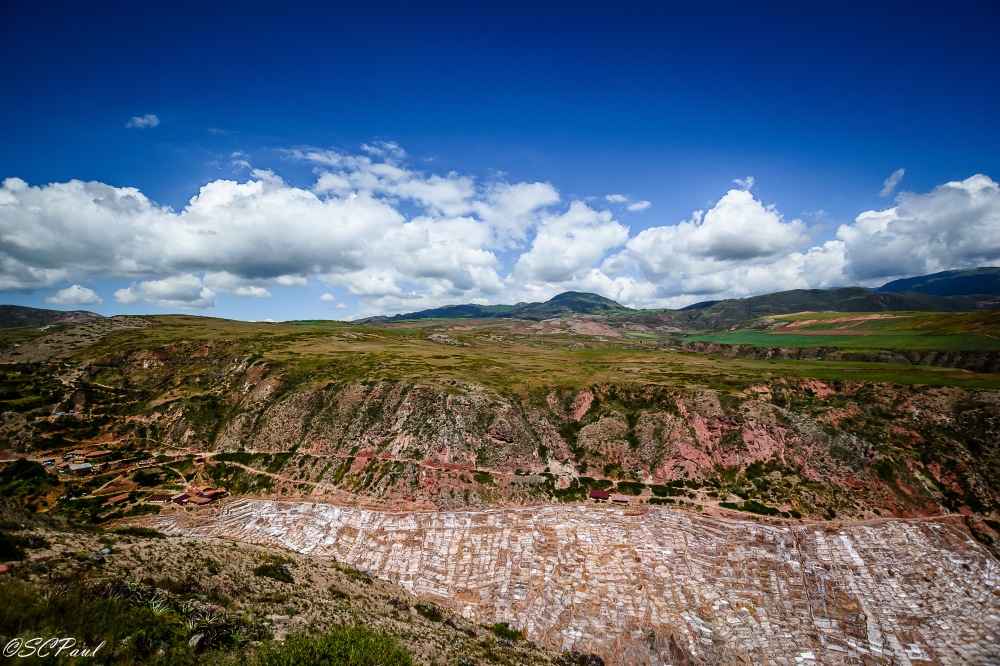


Next stop was Moray. Moray is a giant amphitheatre nestled in a small valley. It consists of concentric circles which was used as a sort of Inca laboratory for agriculture. In the times of the Incas, the circles were not only used for growing crops and experimenting, but in the deepest circles ceremonies to the Earth (Pachamama) took place. The different terraces allowed the Incas to experiment with plants not indigenous to the area.


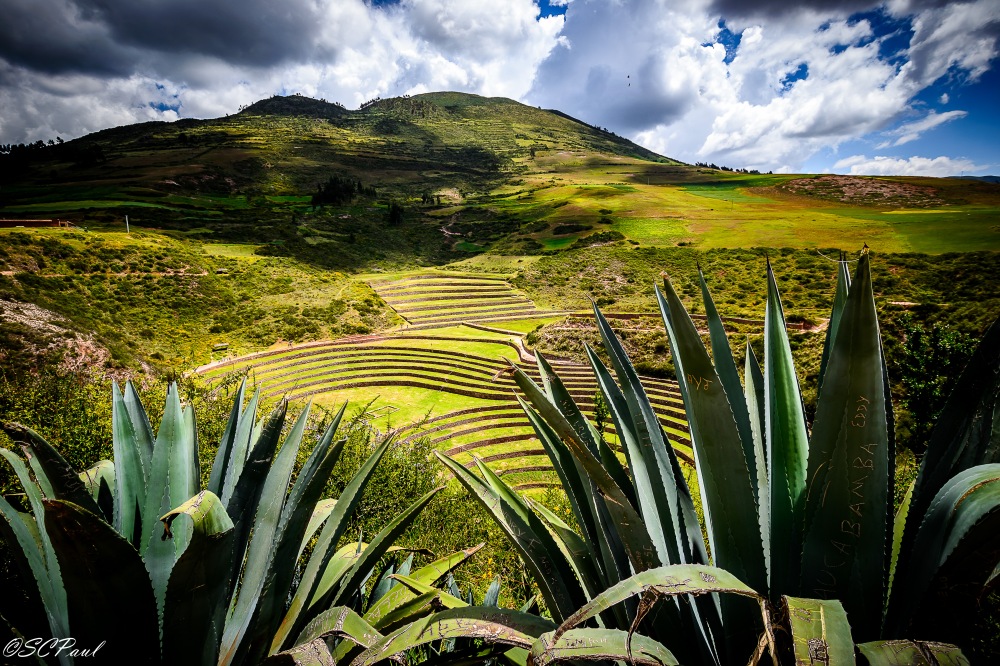
But for me the most moving local experience was our stop at the Chinchero Weaving Cooperative (Awana Wasi). As we entered the cooperative I felt being barraged by colour. There were around 25 women of varying ages, most working on some type of loom. We were welcomed into a courtyard by a woman who greeted us and gave us a very engaging presentation that explained how these women create such stunning, intricate pieces. We learned how the alpaca and llama wool are turned into yarn, starting with how they use a root to create a soap-like substance to wash the wool, how they spin the wool into yarn; how they dye the yarn using organic materials, how they weave the basic fabric and finally how they finish their products with decorative edges. It was a thought-provoking presentation and the women working at the cooperative were so hospitable and kind. I later learned that Chinchero means “Village of the Rainbow,” a perfect name and quite befitting of my experience.
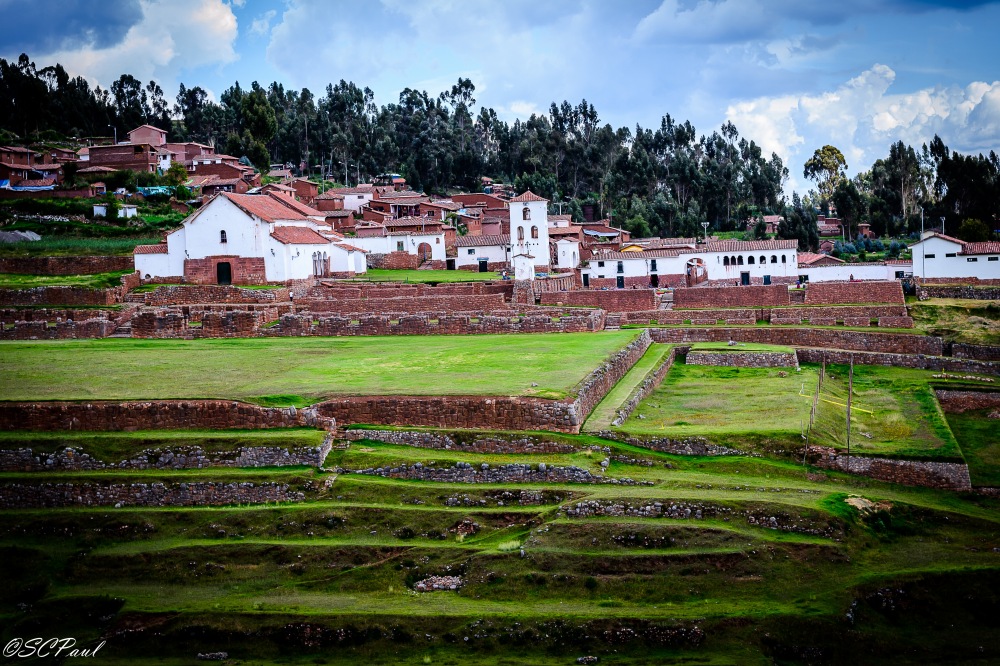


ROUTE OF SUN, LONG DRIVE FROM CUSCO TO PUNO – Next day was a long bus journey of 8 hour from Cusco to Puno with various stops in between. The other alternative is the train but it goes nonstop and can get pretty boring. Our first stop was at Church of San Pedro of Andahuaylillas. It is a small church built-in the 16th Century. It is considered by many in Peru to be the “Sistine Chapel of the Americas,” which is a little bit of a stretch, although the murals and painted ceiling are beautiful.


Next stop was at the Archaeological site of Raqchi. This site contains a massive temple of Wiracocha – a huge, two-story temple over 300 feet in length that was dedicated to the supreme god of the Incas – as well as 200 storehouses made of stone. It is a huge site and it took us quite some to explore the place.

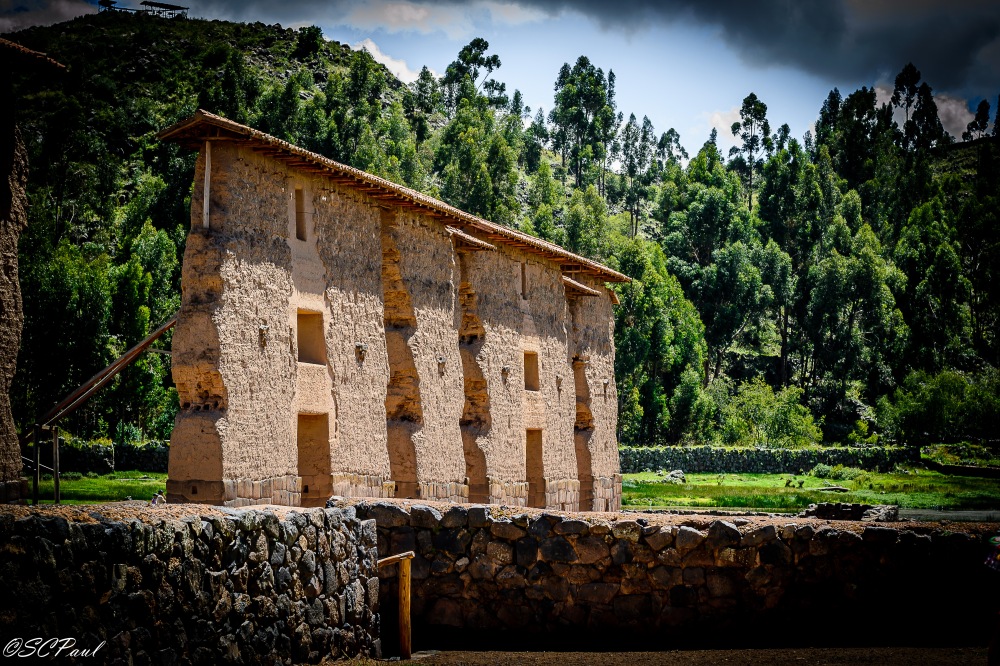


Last stop was the La Raya Pass which is the highest point between Cusco to Puno at an altitude of 4338 m (14,232 feet). It has majestic views in every direction and glaciers over over this stretch of road. There were also many souvenir shops on the way which made it a very colourful sight.


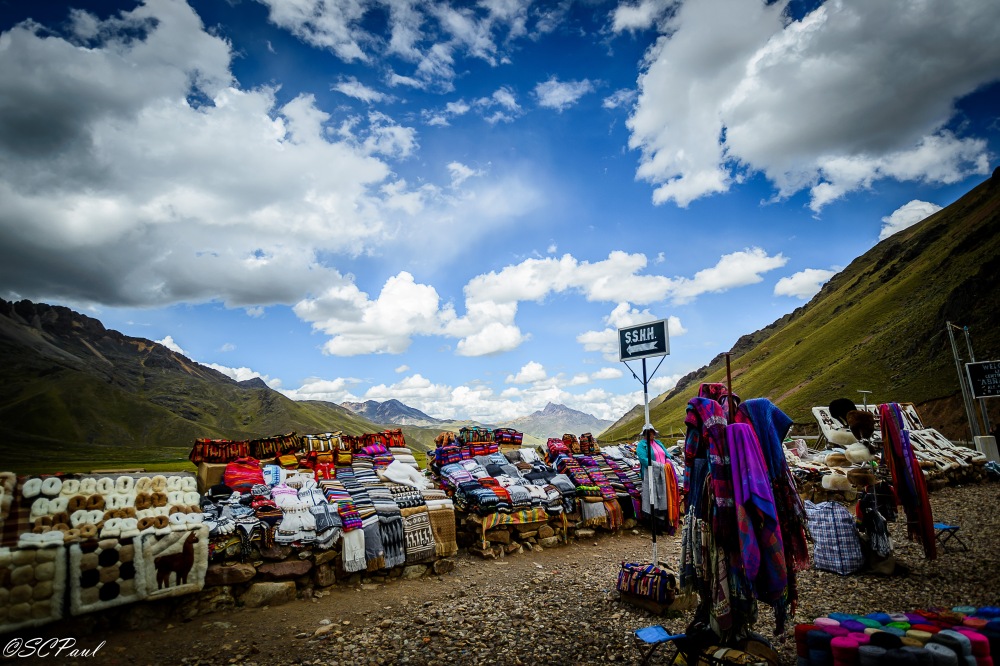
PUNO AND LAKE TITICACA – Puno is small town located on the banks of Lake Titicaca, the highest navigable lake in the world at 3800 metres above sea level. There are 3 beautiful islands on this lake which are worth spending some time on. Since we had limited time we chose to do only 2, the Uros Floating Islands and the Taquile Islands.
Uros inhabitants are lake-dwelling descendants of the 800-year-old Aymara tribe who became nomads on the waters in an effort to escape many long and brutal years of persecution by the Incas. Floating, stationary islands made of this wondrous reed provided them with a safer, more secure lifestyle, and they’ve stayed here since. The bundles of reed grew bigger until we were sailing within the confines of a centuries-old tribal community that it is literally afloat in the middle of the lake. The boat docked and we stepped onto the island. The floor beneath us, hand-built from tortora (reeds), was both buoyant and crunchy with various tiny straw huts spread on it. The residents welcomed us and explained to us (which was obviously translated by our guide) how they made the huts and since the reeds disintegrated they regularly needed to add more on the top. The inhabitants make their living through fishing and tourism. The locals explained to us that there used to be many varieties of fishes in the lake, however in 1940 trout and kingfish was introduced in the lake. They ate up all the local varieties and now only trout and kingfish remain. However despite their traditional lifestyle the Uros inhabitants are not opposed to modern amenities; they now have some motor boats, and several years ago the government donated solar panels for lights, to help prevent “house” fires from candles, fires etc.

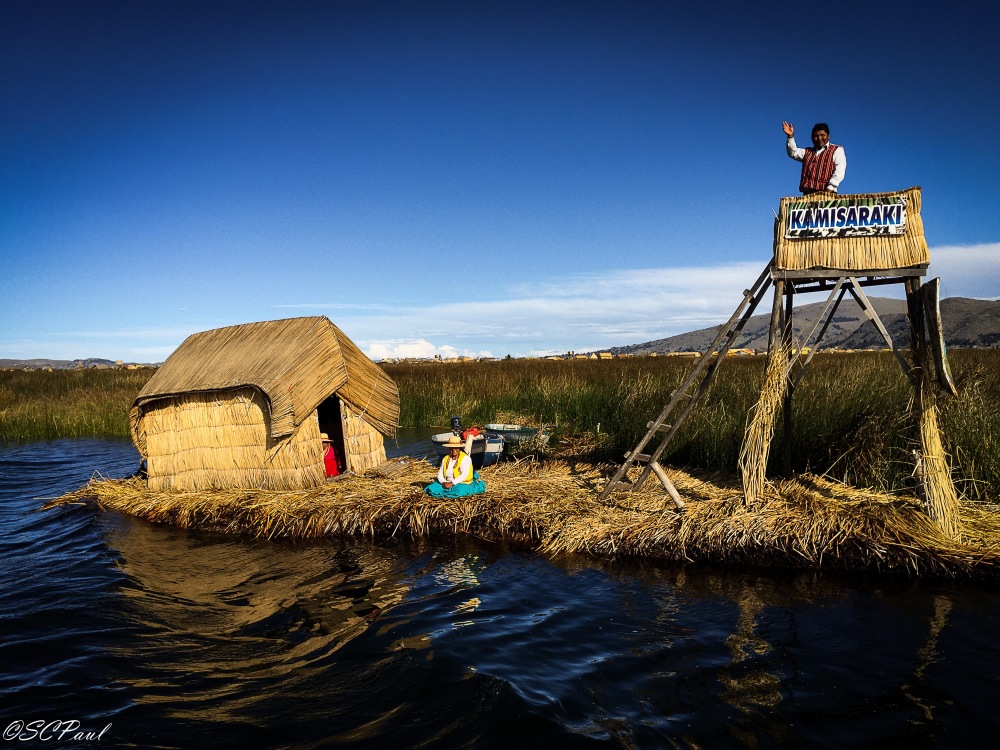



The Taquile Islands boast of a rich culture which the local inhabitants have retained and flourished over the years. The islands had us climbing on the altitude again. The highest point of the island is at 4050 metres and it took us quite a while to reach the main plaza of the island which is at the highest point. After spending some time at the plaza we were invited by one of the Taquile families to have lunch with them where they shared with us their local customs and traditions. Taquile is very famous for its woollen products. It is little wonder that UNESCO thought these knitting techniques needed recognition and gave them UNESCO status.
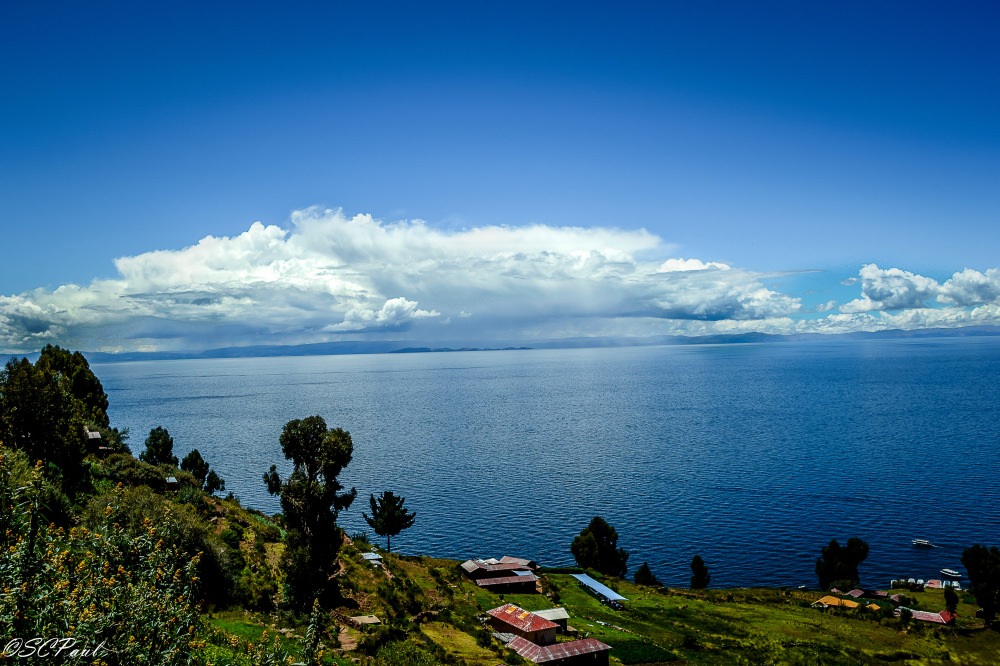

Taquile is most famous for its woolen products. The techniques and patterns have been handed down through generations. Beginning at a very young age knitting is taught to boys. Not because of the meager revenue they can make by selling their wares to tourists, but because it serves a very important social function. When a young man wants to marry a girl on Taquile, he is set with the task of knitting an extremely fine hat. This hat has to be presented to his future father in-law. He will fill the hat with water and only if it doesn’t leak a single drop, he will consent to the marriage. Once engaged he will wear this hat for a certain time. Should his wife die, or he’ll become a grandfather, or chief of the community, a different hat will have to be knitted by himself. The hat is a status symbol. Not one of material wealth, instead it tells of a lifetime of experience. While the men knit their water-proof engagement hats, the women have to weave two special belts for the men. One is very sturdy, but looks rather simple. I was quite shocked to learn that the first belt women weave for their future husband is made from their own long black hair, which they have to cut for this purpose upon a successful engagement. Into the second belt the future wife will weave her demands and wishes from her soon to be husband – a rich harvest, children, a house, cattle etc. The children on the island were also very adorable and quite entertaining too.



I suddenly realized I probably wouldn’t feel comfortable on Taquile Island for a very long period of time because I was too used to the modern gadgets that life offers in the city. However I was feeling quite grateful of being in this unique position of visiting the community. Sadly it was time to say goodbye and head back to Puno. But from our experience, Taquile Island is a beautiful island and if you get the chance to visit it one day you should definitely go.
Next day it was finally time for us to come down to sea level and breath without any efforttttssssss!!! So off we were on our way to the airport. On our way we saw many unfinished houses but people still living them. This was a very common sight throughout Peru. When we asked our driver we learnt that because money is scarce and loans from banks don’t seem a way of life for them thus homes are finished one floor at a time. When finally finished the roofs are capped with bulls, crosses and other ornaments.
LIMA – A MODERN CITY WITH A RICH HERITAGE
A visit to Lima isn’t likely going to make you fall in love with the city at first sight. It is a very urban city covered with grey fog and the streets everlastingly clogged with taxis and cars. But beyond this superficial disguise Lima is a truly fascinating city and once a few layers of dirt have been peeled off you can definitely fall in love with the city. We reached in the evening and decided the Magical Water Circuit which has 13 distinct fountains and also laser programmed musical fountain.
After a very relaxing evening the following morning we started off with a visit to the incredible El Convento de San Francisco (San Francisco Church) in central Lima. The church is noted for its architecture and Spanish Baroque. Tucked away in the churches depths we were led through the catacombs which were only discovered in 1951. The eerie tour takes you through winding tunnels underneath the church where you can see the human remains of an estimated 70,000 thousand people – very spooky as many of the remains are arranged into patterns or designs. Despite the catacombs, the church is architecturally very stunning.

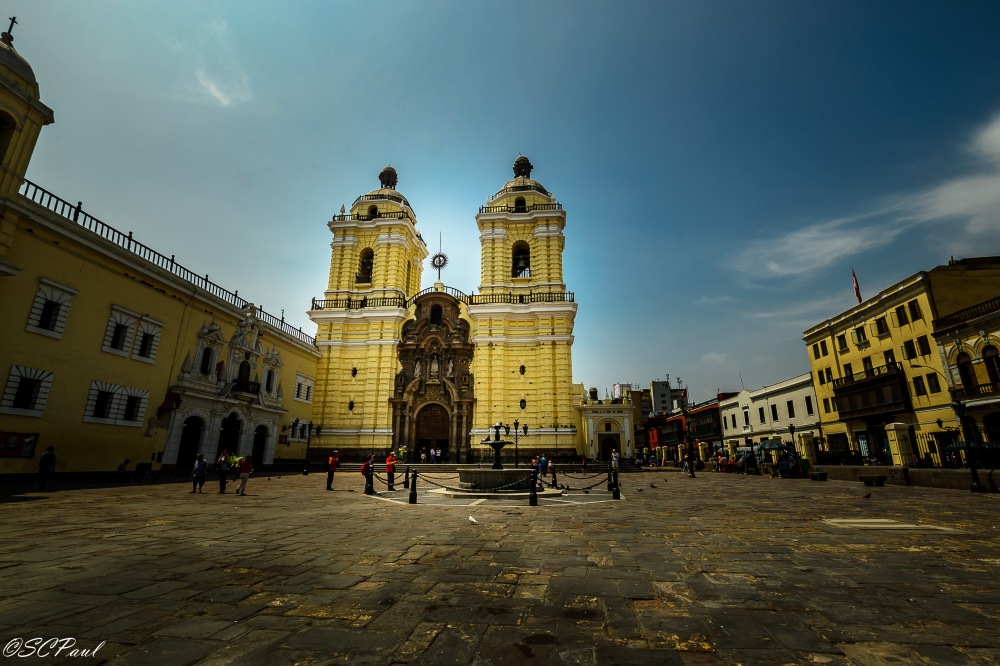
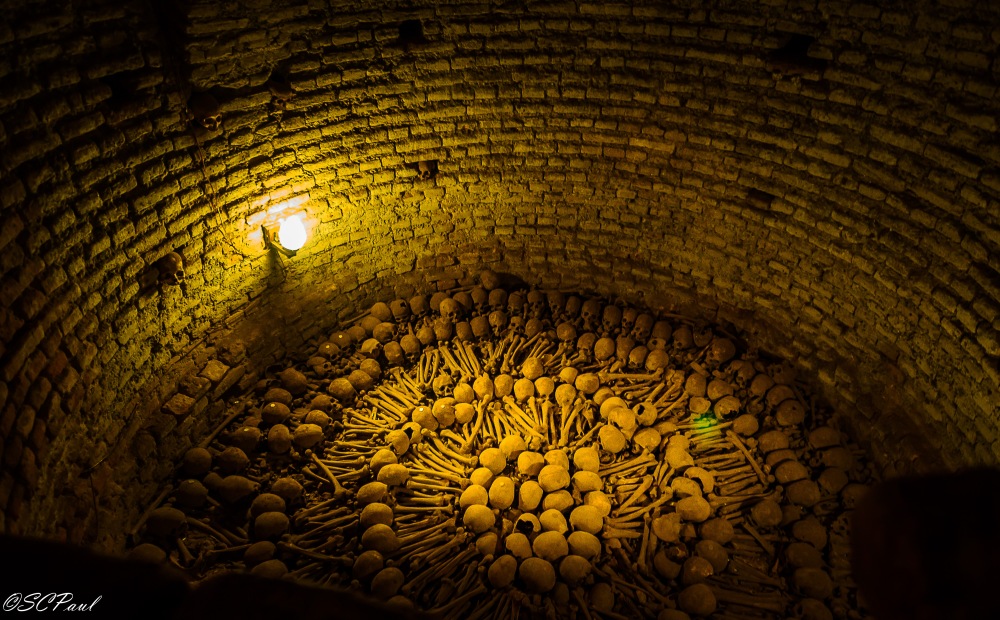
The rest of the day we spent in Plaza de Armas (the main square) exploring diverse architecture. There are many important buildings present in the main square such as the Presidential Palace, Cathedral of Lima and the Palacio Municipal. This was the ceremonial center of old Lima where all important events took place.




I was quite impressed by the city by the end of day and truly wanted to explore more. I felt as if I had only begun to see what this city offered. Lima’s pulsating energy was irresistible and once you’ve experienced some of its hospitality and charisma you will definitely crave more but sadly we had limited time and it was time to say goodbye to Peru.
Supposedly Peru is the 3rd poorest country in South America but that’s only in economic terms. I think a country is much more than just economy and it’s the people who make up the country. We both felt that it’s a really rich country with humanity, humility, hospitality and culture. It’s a place where the modern-day advancements have made peace with age old traditions and the past and the present are harmoniously juxtaposed. It’s a country which has made us think that man in pursuit of happiness has forgotten what real happiness is; but the Andeans seemed much happier than us even in their very basic life.
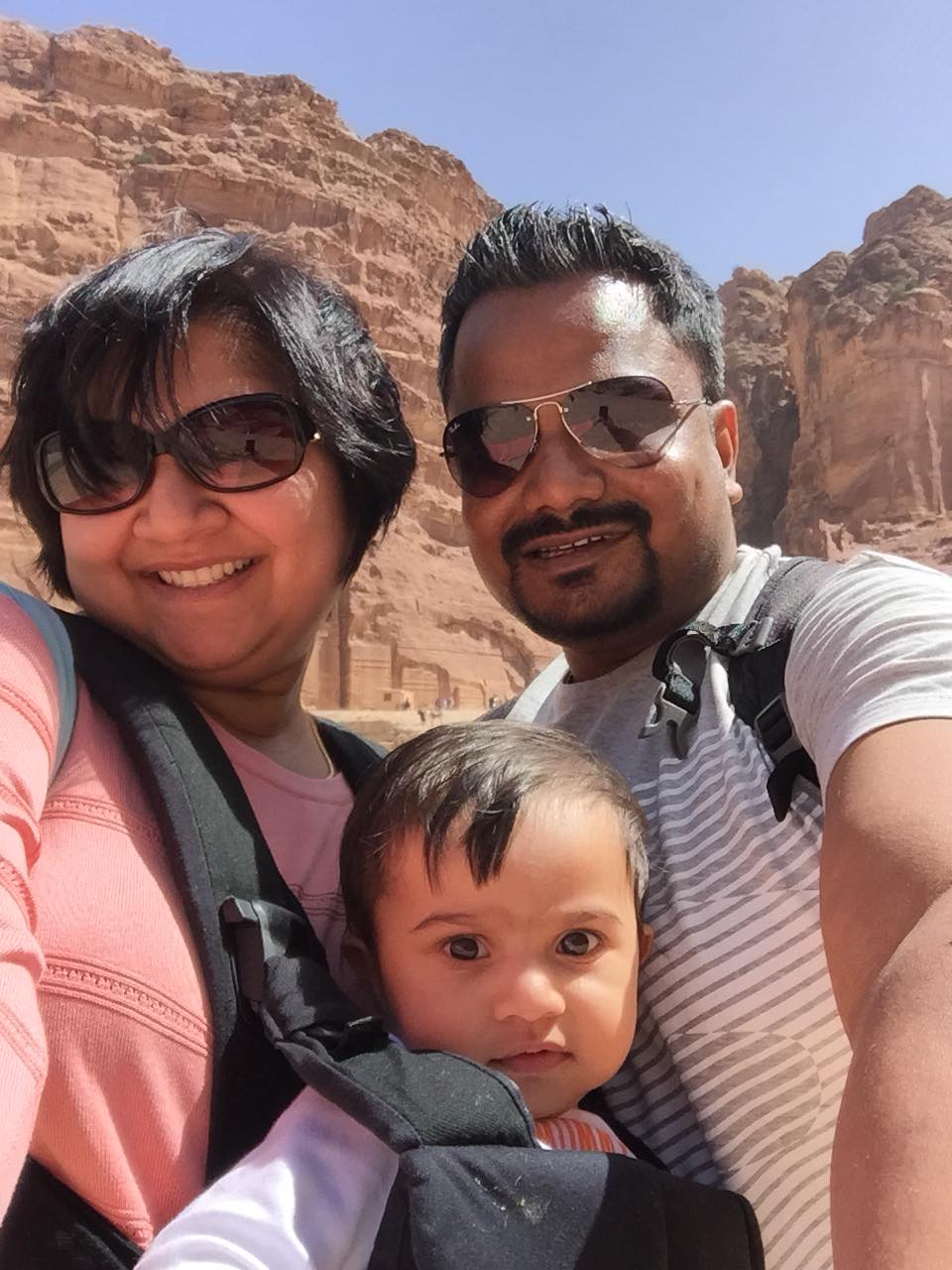










Beautiful pics…beautiful narration. Luved every bit of it…n ur pics too…keep writing…I’ll keep enjoying it! Wishing 4 many more ….
LikeLike
Thanks Sandeep :)Pictures were all done by Sam. Peru is a beautiful country reminded me a lot about India. Will soon post my blog about Brazil, hope you like it.
LikeLike
Great post, very detailed.
Thank you for the information and the beautiful pictures.
I am heading there in May. Excited and looking forward to it. It seems like such a beautiful and diverse country.
LikeLiked by 1 person
Thanks Isha. You will definitely enjoy it a lot and May is the perfect time to visit Peru. Please let me know if you have any questions.
LikeLike
What a very informative and colourful blog Roshniray. I really enjoyed reading – thanks.
Nice work Sam with the photos too buddy. Some fantastic shots there, and really well edited.
I’m already waiting for the next episode.
Regards,
Steve B
LikeLiked by 1 person
Thanks Steve for such lovely comments.. 🙂 The Brazil one is coming up next week…
LikeLike